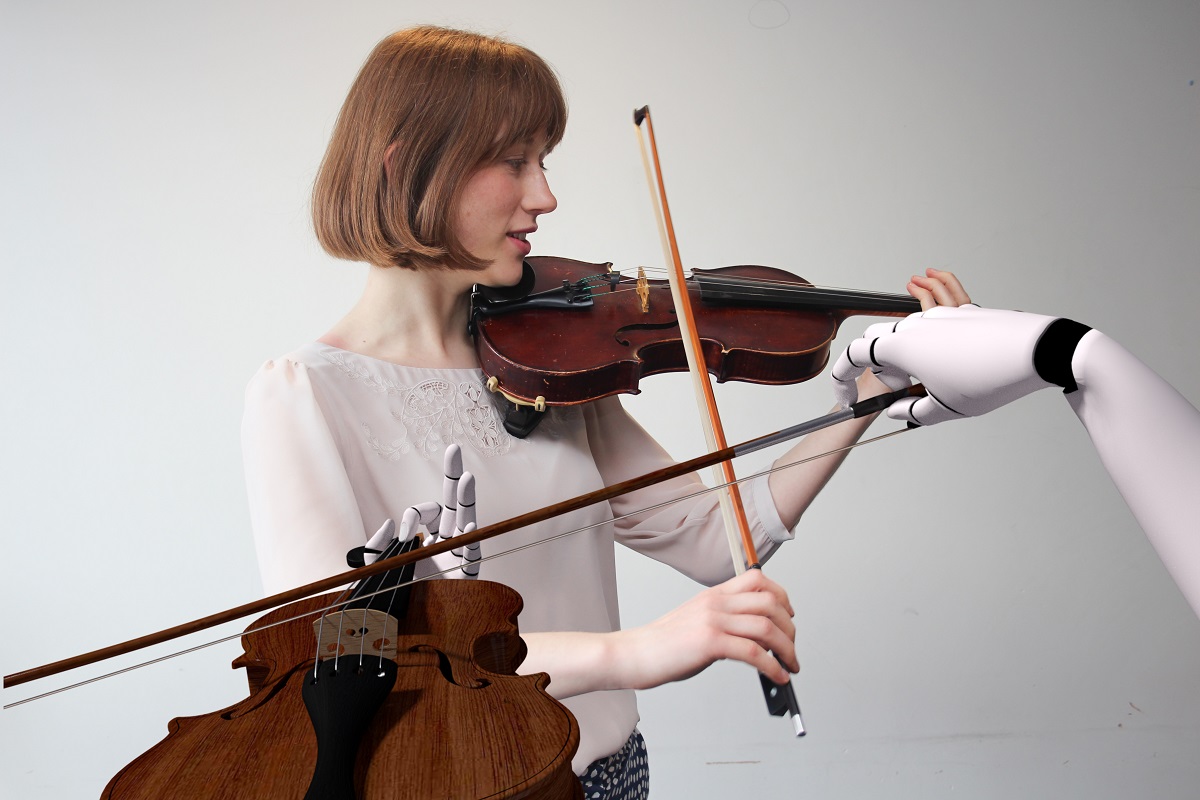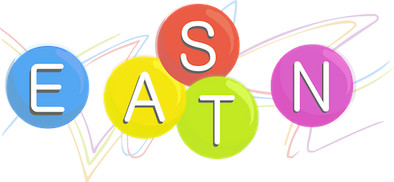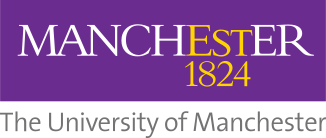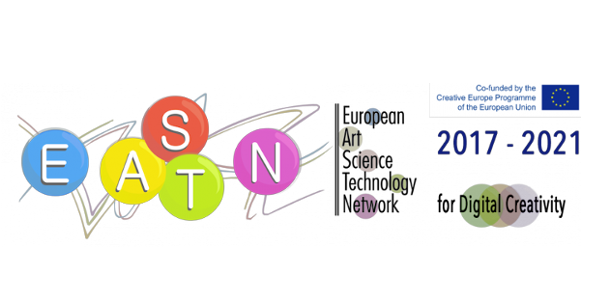Tuesday 26 June 2018
9 - 5pm - Interactive Installations and Videos
Martin Harris Centre
FOYER interactive works
Code Chain (2017)
Ludger Brümmer & Elizabeth Pich (ZKM, Karlsruhe)
Interactive sound installation, app, tablet PC
Devices connected to each other enable chain processes involving several players. In “CodeChain”, sounds are generated according to the principle of the popular children’s game “whisper down the lane” or “telephone”, which are sent to other players and processed by them. Thus the players alter a sound step-by-step, and may change it until it bears no resemblance to the initial sound.
The chain begins with rushing sounds, various oscillators, frequency modulators, and own or prepared recordings, which users select via double click. The selected sound is sent to one of the devices in the pool, where a fellow player can add effects. Available effects are echoes and reverberations, delay, treble and bass filters, granular synthesis, and distortion. In addition the sounds can be formed into a melody with a sequencer. After the sound has had as many effects as desired added to it, it is sent to the next player. Each player changes the sound one more time. The sounds resulting from this process are therefore the result of a collective, partially random, partially deliberate process.
Monocause. Dialectics of the Post-Truth Era (2017)
Yannick Hofmann (ZKM, Karlsruhe)
Interactive sound installation, iOS app
It seems as though in the post-truth age processes of public opinion formation are following more and more the exclusive disjunction of mathematical logic (“either … or …”). Whether in the context of the US presidential election campaign of 2016, so-called Brexit, or the Hamburg G20 protests, post-truthism and false dilemmas polarize society and suggest that only extremes exist that are opposed to each other (for example like/dislike, black/white, rich/poor). For “Monocause. Dialectics of the Post-Truth Era”, excerpts from various texts and speeches were collected – including, for example, the doctrine of US President Bush in the 2000s (“you’re either with us, or against us”). With a swipe, museum visitors can express sympathy with or resentment towards people from A like Adorno to Z like Žižek. The swipe gesture thus becomes the equivalent of the “thumbs up” or “thumbs down” hand gestures of Roman emperors at the circus. The interface is based conceptually and in its design on the famous dating app Tinder.
Room F20 – video projections
Sculpture (2017)
Ludger Brümmer (ZKM)
Audiovisual Installation
Cybernetic objects are self-regulating or recursively acting systems that seem to act independently. In the Sculpture installation, the computer initially generates manually generated sounds, which are measured by a microphone in their volume and trigger new sounds at the appropriate volume. This system acts completely self-sufficiently and creates different sound patterns as well as visual objects in the form of short video passages. During the performance, the composer does not interfere with the way it works, but merely changes the sounds or video scenes used.
Quantum Music #002 (2018)
Alexandros Kontogeorgakopoulos, Daniel Burgarth
Music and Quantum Dynamics share a wave-like nature. Many analogies and surprising connections between the two fields exists, which can be illustrated and explored through sonification techniques. Quantum Music #002 is is an audiovisual installation based on controlled quantum dynamical systems.The artists / scientists of the composition have suggested in a research paper in the past an intuitive sonification process in order to represent acoustically and musically an important quantum phenomenon that is used in quantum computation. Quantum Music #002 employees these techniques and communicates the inherent beauty of the magic world of quantum mechanics by combining musical and visual content in a pure minimalistic language.
10:00 - Digital Creativity 3: Network Magnetic Dance: Tokyo-Manchester
Length: 45 minutes ( + 15 min break)
“Magnetic Dance” is a telematic dance performance, where dancers in different locations use their movements to weave the rhythm and melody of the music through their movements measured by wearable wireless sensors. This live-streamed session will be followed by a research discussion with Iannis Zannos in Tokyo.
Magnetic Dance
Iannis Zannos (Ionian University) with the NOVARS Research Centre
11:00 - Digital Creativity 4a: Kim Hedås's Augmented City
Length: 45 minutes ( + 15 min break)
Kim Hedås will discuss her data-driven installation in Hospital Karolinska Sjukhuset in Stockholm and in Malmö.
Large-scale installations in public areas
Kim Hedås (Royal College of Music, Stockholm)
12:00 - Digital Creativity 4b: Maia - a Mixed Reality Simulation Framework
Length: 60 minutes including VR/ AR walk to Coupland Street
This live demo will connect the John Thaw Studio Theatre in real time with a Plaza in Malaga (rendered below) using Ignacio Pecino’s virtual reality/ augmented reality synchronisation tool designed for EASTN-DC, as part of his residency started last March 2018.
This project development will lead to future Augmented Reality soundwalks across Coupland Street (Ignacio’s third visit in the Fall), which has been home to some of the University’s most important and influential figures – from Ernest Rutherford splitting the Atom, to creating the first stored-program computer (Williams, Kilburn and Tootill), or cooking Alan Turing’s 1950’s paper questioning whether computers can think like humans, which strongly influenced modern Artificial Intelligence.
Maia – a mixed reality simulation framework for synchronised trans-real environments
Recursive Arts – Dr Ignacio Pecino (EASTN-DC Manchester Artist in Residence 2017-21)
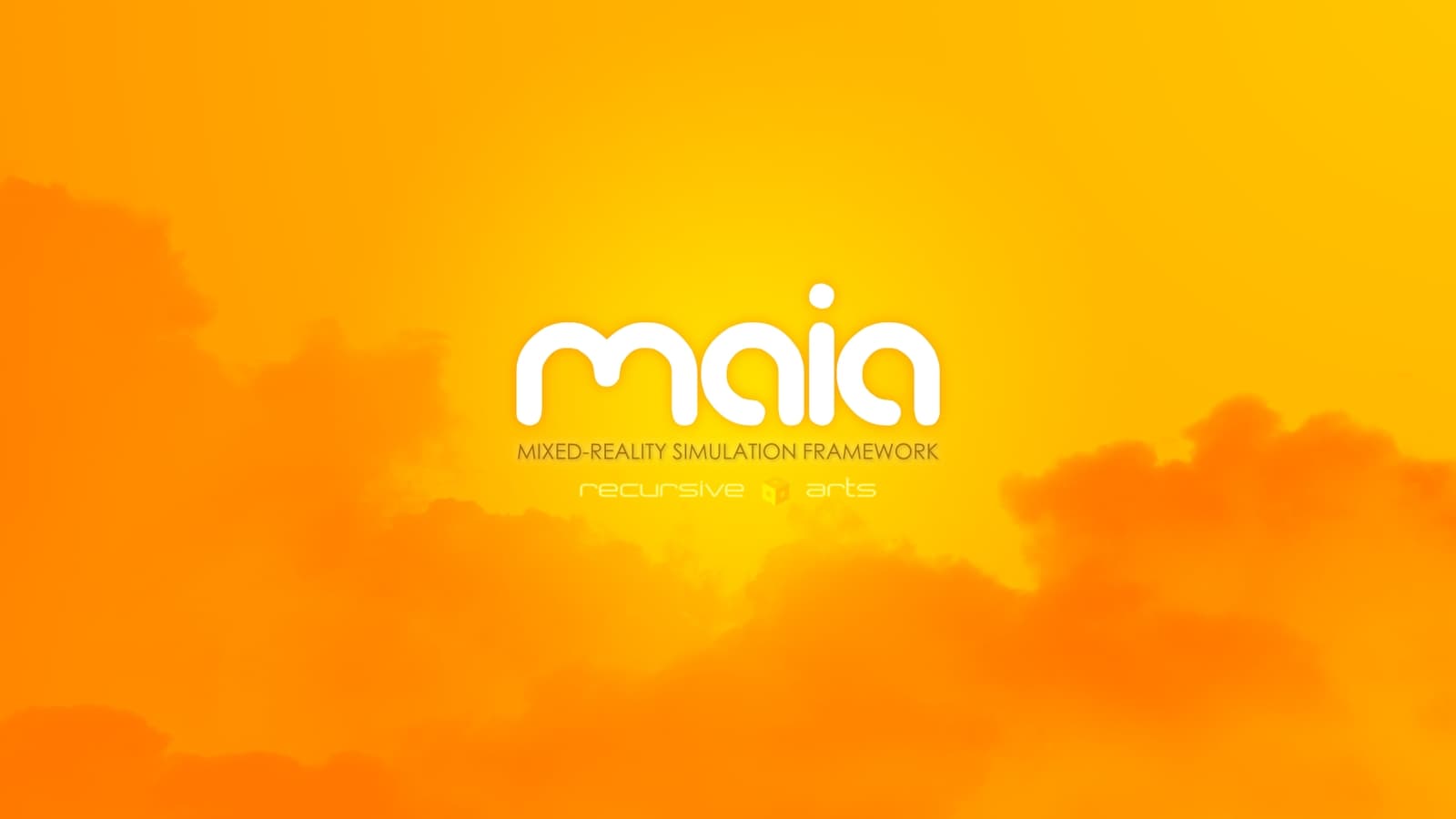
13:00 - LUNCH BREAK
Length: 60 minutes
Recommended places in the area (Cafe Arts, Manchester Museum Cafe)
Lunch
Short Lunch break
14:00 - RESEARCH SESSION 1: HAPTICS SESSION - Music in the body
Length: 45 minutes ( + 15 min break)
A presentation and interactive demo in the field Fields of HAPTIC digital musical instruments. The interface aims to recreate the sense of touch by applying forces, vibrations, or motions to the user and can be applied in the context of performance, data sonification, interactive music composition, physical modelling, but also in interactive sound design environments for people with disabilities,
Haptics Session – Music in the Body
Dr Alexandros Kontogeorgakopoulos – Cardiff School of Art & Design
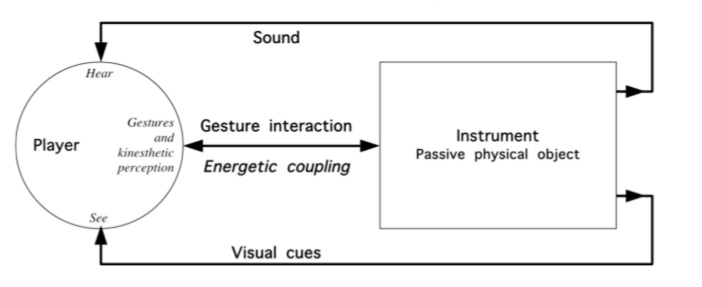
15:00 - RESEARCH SESSION 2: AUDIFICATION: Creating Music with Chemical Data
Length: 45 minutes ( + 15 min break)
“So that I may perceive whatever holds // The world together in its inmost folds.”– Faust, Johann Wolfgang Goethe
A journey through three years of PhD research exploring the use of chemical data for sound creation. Featuring the first ever PhD at NOVARS combining shared supervision between Music and the School of Chemistry.The open research session presents methodologies for and examples of the use of chemical data in electroacoustic music composition: from aesthetic inquiries into the audification of atomic oscillations, over virtual reality molecular art installations, to the sonification of complex chemical systems such as the pollution cycles of the Baltic Sea and DNA patterns of extinct animal species.
Molecular Sonification
Falk Morawitz
16:00 - RESEARCH SESSION 3: Prototyping A VR Trainer with the MYO Armband
Length: 45 minutes
HSIF-funded project Virtuoso, is a collaborative effort between Manchester University academics from Music (NOVARS Research Centre), the Alliance Manchester Business School and EON Reality, a company specialised in Augmented Reality (AR) and Virtual Reality (VR) software for Education and Training. Find out more about this biofeedback-based training system for violinists to understand how to reach the highest-levels of musical performance learning from a VR and potentially AR training system.
Virtuoso: further avenues of exploration
Virtuoso team are: Richard Allmendinger (AMBS, UoM), Jane McConnell (Eon Reality UK, Manchester), Ricardo Climent (NOVARS, UoM), Chris Rhodes (NOVARS, UoM), Cameron Sands (Computer Science, UoM), Kieron Flanagan (AMBS, UoM)
